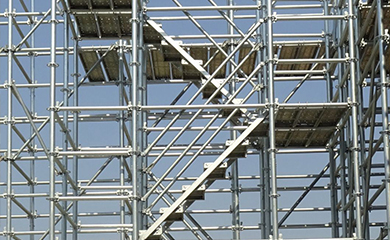Oct . 21, 2024 08:03 Back to list
Best Practices for Removing Formwork from Concrete Structures
Removing Formwork from Concrete Best Practices and Considerations
When it comes to the construction of concrete structures, the use of formwork is essential. Formwork is a temporary structure used to mold the concrete into the desired shape and ensure that it retains that shape while it cures. However, once the concrete has set, the next crucial step is removing the formwork properly. This process may seem straightforward, but it requires careful attention to avoid damaging the concrete and ensuring the integrity of the structure. In this article, we will explore the best practices for removing formwork from concrete, along with important considerations for suppliers in the industry.
Understanding Formwork Types
Before delving into the removal process, it's important to understand the different types of formwork used in construction. The most common types include
1. Plywood Formwork This is widely used for its cost-effectiveness and versatility. It can be cut and shaped to fit various designs. 2. Steel Formwork Known for its durability and ability to produce a high-quality finish, steel formwork is often used in large projects.
3. Plastic Formwork Lightweight and easy to handle, plastic formwork is increasingly popular for its reusability and flexibility in smaller construction projects.
Understanding the type of formwork in use is critical, as each has its own removal guidelines and timeframes based on the curing and strength gain of the concrete.
Timing the Removal
One of the essential considerations when removing formwork is timing. The general guideline is to wait until the concrete has reached a sufficient strength to support itself without the formwork. This is typically measured in terms of the concrete's compressive strength.
- Vertical Formwork For walls and columns, formwork can often be removed after 24-48 hours if the concrete has reached at least 70% of its designed strength. - Horizontal Formwork For slabs and beams, you may need to wait longer, generally around 7 days, before they can bear load and the formwork can be safely removed.
Best Practices for Removal
removing formwork from concrete supplier

When it's time to remove the formwork, following best practices is crucial for both safety and quality
. Here are some tips companies and workers should adhere to1. Inspect the Curing Conditions Ensure that the concrete has properly cured, and verify using strength tests if possible. 2. Use Appropriate Tools Use hand tools, such as pry bars or timber wedges, to gently ease the formwork away from the concrete. Avoid using excessive force, as this can lead to cracks or surface damage.
3. Work from the Top Down When possible, start removing the formwork from the top and work your way down. This helps to relieve any stresses on the concrete and prevents any unexpected shifts.
4. Be Mindful of Weather Conditions Adverse weather can affect the curing process. If the concrete has been exposed to high winds or extreme temperatures, it may require additional time before formwork can be removed.
Post-Removal Care
Once formwork is removed, it's important to protect the newly exposed surfaces of the concrete. This includes
1. Moist Curing Continue to cure the concrete with moisture to prevent cracking and ensure proper strength development. 2. Surface Inspection Check for any imperfections or defects that may need repair.
3. Avoiding Load Issues Be cautious about loading newly formed concrete until it has reached its full design strength, as placing too much weight too quickly can lead to structural issues.
Conclusion
Removing formwork from concrete is a crucial step in the construction process that requires careful planning, timing, and execution. By understanding the specific type of formwork used and adhering to best practices during removal, suppliers and construction teams can ensure the durability and integrity of their concrete structures. Proper removal not only enhances the quality of the concrete finish but also contributes to the overall safety and longevity of the structure. As the construction industry continues to evolve, staying informed about the latest techniques and materials will remain paramount for the success of concrete projects.
-
High-Quality U Head Jack Scaffolding – Reliable Scaffolding Jack Head Manufacturer & Factory
NewsJul.08,2025
-
High-Quality I Beam H20 Leading Timber Beam H20 Material Factory, Exporters & Manufacturers
NewsJul.08,2025
-
High-Quality Powder Coating Steel Formwork - Durable & Corrosion Resistant Solutions
NewsJul.07,2025
-
Inclined Column Formwork Supplier – Durable & Precise Solutions for Unique Structures
NewsJul.07,2025
-
High-Quality Water Stop Solutions Trusted Water Stop Company & Suppliers
NewsJul.07,2025
-
High-Quality Formwork Material Supplier Reliable Manufacturer & Factory Solutions
NewsJul.06,2025